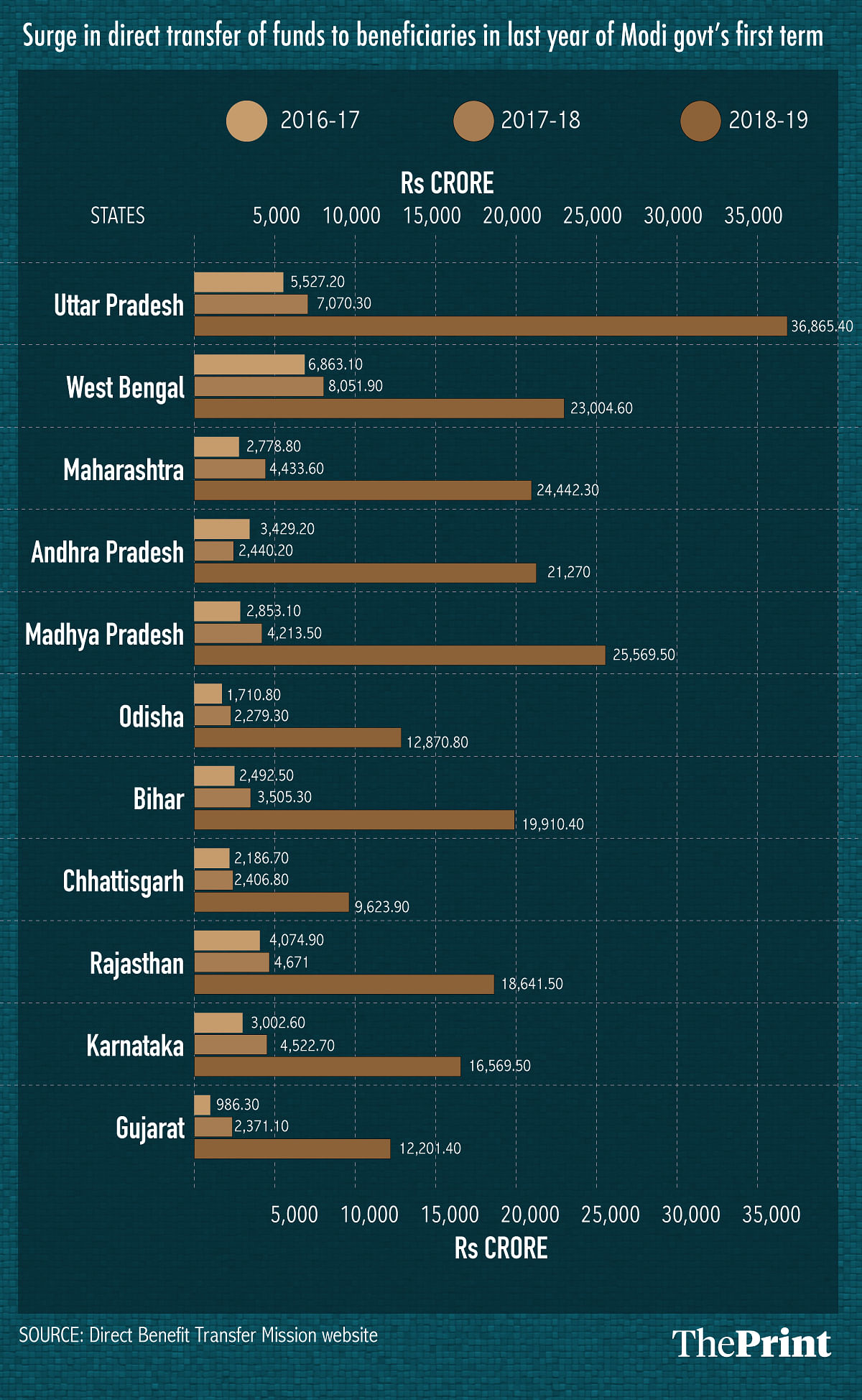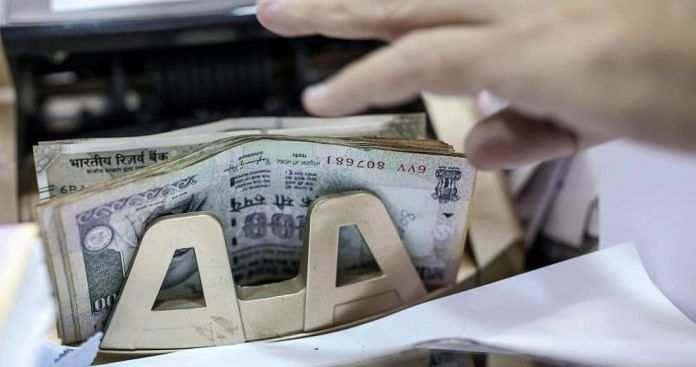New Delhi: The Narendra Modi government had given a big push to Direct Benefit Transfer (DBT) of funds in the last year of its first term in office, and states such as Uttar Pradesh, West Bengal, Maharashtra, Madhya Pradesh, Andhra Pradesh and Bihar were the biggest beneficiaries.
According to the data available with the DBT Mission, which comes under the cabinet secretariat, almost all the states in the country, irrespective of their population, showed a huge surge in direct transfer of funds in 2018-19.
There was a three to over eight-fold jump in direct transfer of funds to states in 2018-19 as compared to 2017-18, the data revealed.
“The push given to DBT could be one of the reasons behind the overwhelming numbers that the Modi government got at the hustings in May,” a senior government official, who did not wish to be named, told ThePrint.
What is DBT?
Introduced by the Congress-led United Progressive Alliance government in 2013 to ensure efficient delivery of services and accurate targeting of beneficiaries, DBT entails transfer of funds of welfare schemes directly to the beneficiaries’ accounts or transfer of goods to the beneficiaries.
The programme got a fresh impetus after the Modi government came to power in 2014.
In 2018-19, a total of Rs 3.29 lakh crore have been transferred to 124 crore beneficiaries of 440 central schemes through direct benefit transfer as against Rs 19,08,71 crore in 2017-18 for 437 schemes, the data said.
The 440 schemes, covered under DBT, were related to scholarships, women, children and farmers. In 2014-15, there were just 34 schemes. Since 2013, the government has transferred a total of Rs 7 lakh crore through DBT.
In the current fiscal, the government has already transferred Rs 48,056 crore through DBT until June.
Also read: Geo-tagging, e-payment, real-time check — how Modi’s rural housing scheme is different
Non-BJP states also saw a surge in DBT
In Assam, beneficiaries got Rs 4,937.8 crore in 2018-19 through DBT as against Rs 1,637.6 crore in 2017-18. Bihar saw an over five-fold increase in DBT in the same period — from Rs 3,505.3 crore in 2017-18 to Rs 19,910.4 crore in 2018-19.
In Chhattisgarh, where the Congress came to power last year, DBT in 2018-19 was to the tune of Rs 9,623.9 crore compared to Rs 2,406.8 crore in 2017-18. In 2016-17, the state had got Rs 2,186.7 crore through DBT.
Even non-BJP states like Odisha, Punjab and Rajasthan saw a surge in direct transfer of funds. In Odisha, for instance, funds to the tune of Rs 12,870 crore was transferred to the beneficiaries’ account in 2018-19 as against Rs 2,279 crore in 2017-18 and Rs 1,710.8 crore in 2016-17.
The PM has always spoken about the benefits of DBT and how it has helped check corruption by removing fake beneficiaries.

Bigger states have gained more
States such as Uttar Pradesh, West Bengal, Andhra Pradesh, Maharashtra and Gujarat were the biggest beneficiaries of DBT in the last fiscal.
For instance, Uttar Pradesh got Rs 36,865 crore through DBT in 2018-19 as against Rs 7,070 crore in 2017-18. Maharashtra got Rs 24,442 crore in 2018-19 as against Rs 4,433 crore in 2017-18.
DBT to Trinamool Congress-ruled West Bengal in 2018-19 was Rs 23,004 crore as against Rs 8,051 crore in 2017-18 and Rs 6,863 crore in 2016-17.
What led to the surge?
Senior officials in the DBT Mission said the main reasons for the jump in direct fund transfer to states could be because of the inclusion of more schemes under DBT and better reporting by ministries.
“The increase (of DBT) in 2018-19 could be because more schemes were brought under DBT, including Pradhan Mantri Kisan Samman Nidhi Yojana (PM-KISAN), which was launched in February,” said a government official.
The government had launched PM-KISAN just ahead of the Lok Sabha elections to augment the income of small and marginal farmers. In May, the government, however, approved a proposal to extend the scheme to all farmers in the country. Under the scheme, Rs 6,000 will be given per year in three installments of Rs 2,000 each to the farmers.
“Also, compared to earlier, more and more ministries have started reporting the funds transferred by them for their respective schemes to states. Earlier, the reporting was sporadic,” said another official.
All the funds transferred are for central schemes. The respective ministry, which runs the scheme, transfers the funds to the eligible beneficiaries.
Also read: Polls won but Modi govt won’t stop pushing its rural schemes, now plans to raise the pitch






